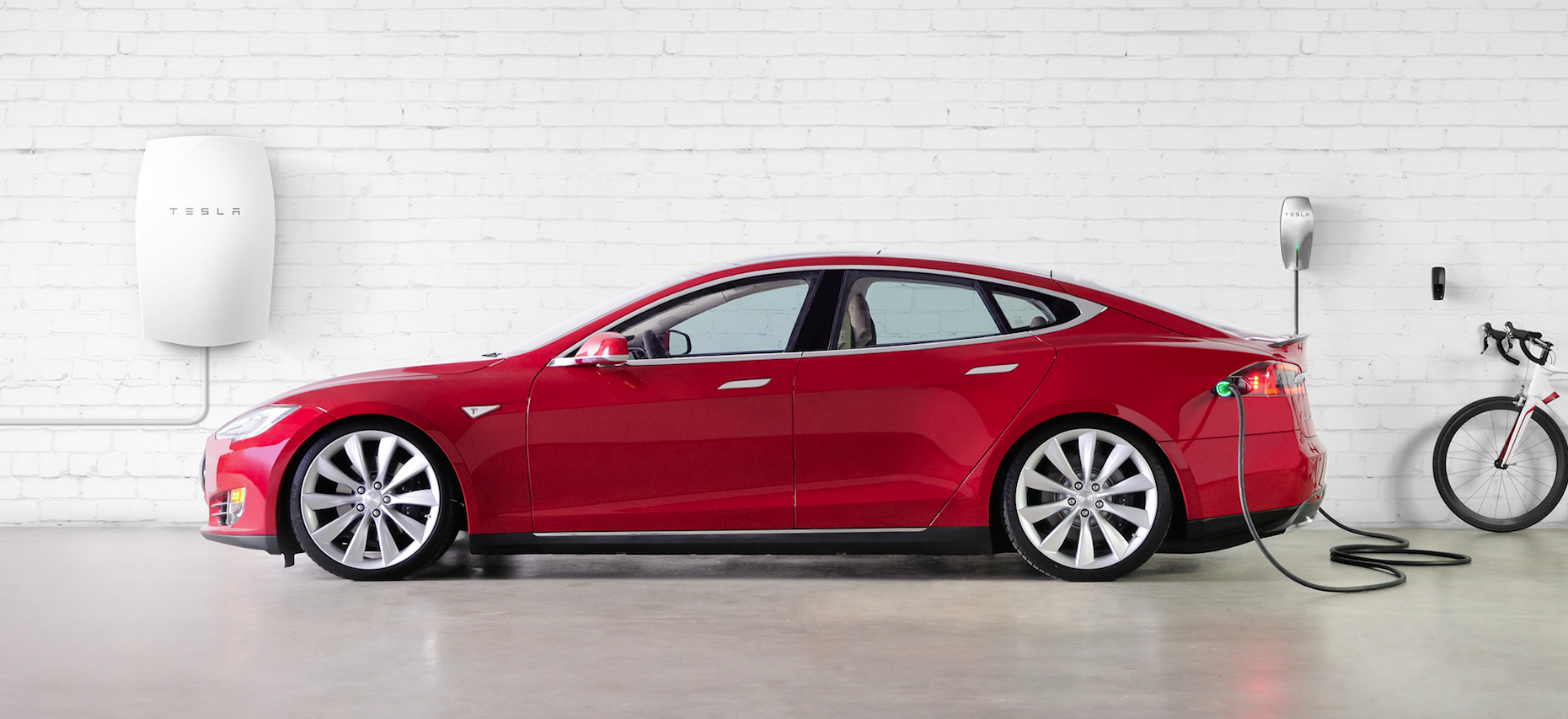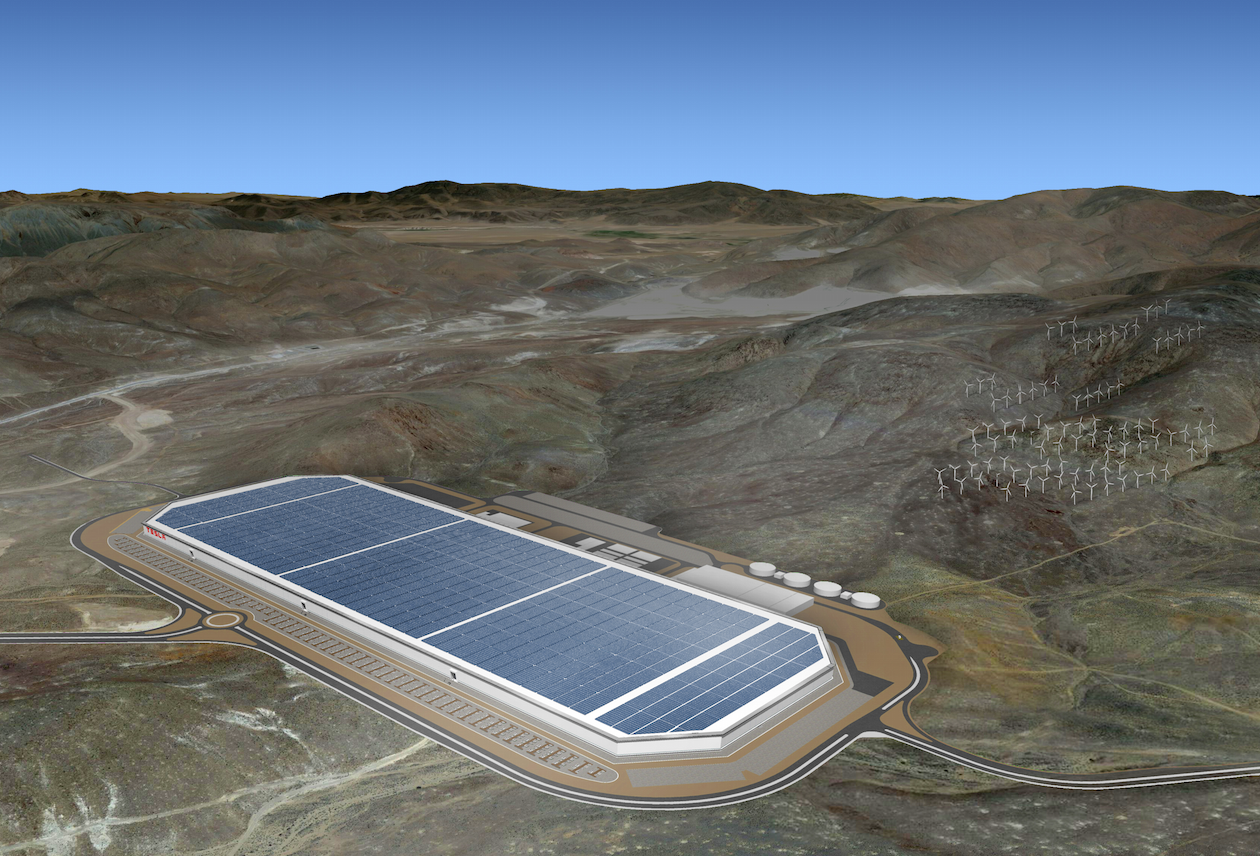In its latest Technology Outlook, oil and gas giant BP predicted batteries for vehicles and electricity-grid applications could have “significant potential to influence future fossil-fuel demand in the transport sector and enable greater penetration of intermittent renewable energy.”
A convergence of events is making batteries affordable and even desirable as catalysts for nudging consumers, industries, and nations from carboncentric energy consumption.
The Department of Energy’s Joint Center for Energy Storage Research is working on prototypes for transportation and the grid that, when scaled to manufacturing, would deliver five times the energy density at one-fifth the cost of commercial batteries available when the Joint Center launched in 2012.
What’s really put batteries in the spotlight, though, is the Gigafactory that Tesla Motors is building near Reno, Nev., and expects to open this year. When it reaches full capacity in 2020, this $5 billion, 13.6 million-sf plant could be producing enough lithium-ion battery packs annually to equal 50 gigawatt hours of storage, or more than what had been produced worldwide in 2013.
Tesla’s CEO Elon Musk told Fast Company that advancements in battery technology would be “incremental.” But Musk is confident his company can lower battery cost by at least 30% through mass production. “The fundamental focus is the cost per unit of energy,” he told Tech Insider.
 Last April, Tesla rolled out Powerwall, a rechargeable lithium-ion battery for residential use.
Last April, Tesla rolled out Powerwall, a rechargeable lithium-ion battery for residential use.
Last April, Tesla rolled out Powerwall, a rechargeable lithium-ion battery for residential use. One model, retailing for $3,500, offers 10kWh capacity for backup applications; a second model, for $3,000, has 7kWh peak capacity for daily-cycle applications. Tesla’s Powerpack, for commercial use, can store up to 100kWh of electricity, and retails for around $25,000.
Tesla positions batteries as less-expensive ways for homeowners and businesses to store power collected by solar PV arrays during the day for use at night. If battery energy storage proliferates, Musk believes that 10% of the world’s fossil-fuel power plants could be mothballed within years.
“The goal has not been: Let’s make cars; the goal has been: We need to accelerate the advent of sustainable energy,” Musk said. Still, Tesla is creating demand by expanding its electric-car plant in Fremont, Calif., to pump out 500,000 cars per year by 2020.
Batteries for energy storage are already elbowing their way into the commercial mainstream, says Garrett Fitzgerald, Senior Associate with the Rocky Mountain Institute. They are being deployed in the PJM wholesale electricity market for frequency regulation, and in California for demand-charge reduction to smooth out energy loads.
Janice Lin, Co-founder of Strategen Consulting and Executive Director of the California Energy Storage Alliance, foresees battery energy storage as the next tool for property managers to control energy, deliver services when occupants demand it, and make money in the process. And battery energy storage is economically feasible in markets where feed-in tariffs, which offer producers a set price for renewable energy returned to the grid, have been dropping.
A big part of Tesla’s game plan is to stimulate public acceptance of solar energy, which accounts for 1% of U.S. electricity output but is expanding. As of the second quarter of 2015, 22.7 gigawatts of solar capacity had been installed, and another 20,000 megawatts are forecast to come online in 2015-16, according to the Solar Energy Industries Association. Residential solar costs have dropped 45% since 2010, and utility-scale solar has fallen even more, to where recent contract prices are below 5 cents/kWh.
In its $1.1 trillion spending bill, passed on December 18, Congress included a five-year extension of the 30% solar investment tax credit, which was set to expire for residential and decline to 10% for commercial at the end of 2016. Bloomberg New Energy Finance had estimated that new commercial and industrial solar capacity would be nearly 18% less from 2015 through 2022 under a lower tax credit. New residential capacity would be 31% less without the tax credit.
Related Stories
BIM and Information Technology | Mar 11, 2024
BIM at LOD400: Why Level of Development 400 matters for design and virtual construction
As construction projects grow more complex, producing a building information model at Level of Development 400 (LOD400) can accelerate schedules, increase savings, and reduce risk, writes Stephen E. Blumenbaum, PE, SE, Walter P Moore's Director of Construction Engineering.
AEC Tech | Mar 9, 2024
9 steps for implementing digital transformation in your AEC business
Regardless of a businesses size and type, digital solutions like workflow automation software, AI-based analytics, and integrations can significantly enhance efficiency, productivity, and competitiveness.
AEC Tech | Feb 28, 2024
How to harness LIDAR and BIM technology for precise building data, equipment needs
By following the Scan to Point Cloud + Point Cloud to BIM process, organizations can leverage the power of LIDAR and BIM technology at the same time. This optimizes the documentation of existing building conditions, functions, and equipment needs as a current condition and as a starting point for future physical plant expansion projects.
AEC Innovators | Feb 28, 2024
How Suffolk Construction identifies ConTech and PropTech startups for investment, adoption
Contractor giant Suffolk Construction has invested in 27 ConTech and PropTech companies since 2019 through its Suffolk Technologies venture capital firm. Parker Mundt, Suffolk Technologies’ Vice President–Platforms, recently spoke with Building Design+Construction about his company’s investment strategy.
AEC Tech | Feb 20, 2024
AI for construction: What kind of tool can artificial intelligence become for AEC teams?
Avoiding the hype and gathering good data are half the battle toward making artificial intelligence tools useful for performing design, operational, and jobsite tasks.
AEC Tech | Feb 20, 2024
ABC releases technology guide for AI in construction
Associated Builders and Contractors has released an artificial intelligence (AI) technology guide for the U.S. construction industry. AI in Construction — What Does It Mean for Our Contractors? outlines definitions, construction use cases, and considerations for the implementation of AI in construction.
AEC Tech | Jan 24, 2024
4 ways AEC firms can benefit from digital transformation
While going digital might seem like a playground solely for industry giants, the truth is that any company can benefit from the power of technology.
Modular Building | Jan 19, 2024
Building with shipping containers not as eco-friendly as it seems
With millions of shipping containers lying empty at ports around the world, it may seem like repurposing them to construct buildings would be a clear environmental winner. The reality of building with shipping containers is complicated, though, and in many cases isn’t a net-positive for the environment, critics charge, according to a report by NPR's Chloe Veltman.
AEC Tech | Jan 8, 2024
What's driving the surge of digital transformation in AEC today?
For centuries, the AEC industry has clung to traditional methods and legacy processes—seated patterns that have bred resistance to change. This has made the adoption of new technologies a slow and hesitant process.
Sustainability | Nov 1, 2023
Researchers create building air leakage detection system using a camera in real time
Researchers at the U.S. Department of Energy’s Oak Ridge National Laboratory have developed a system that uses a camera to detect air leakage from buildings in real time.
















